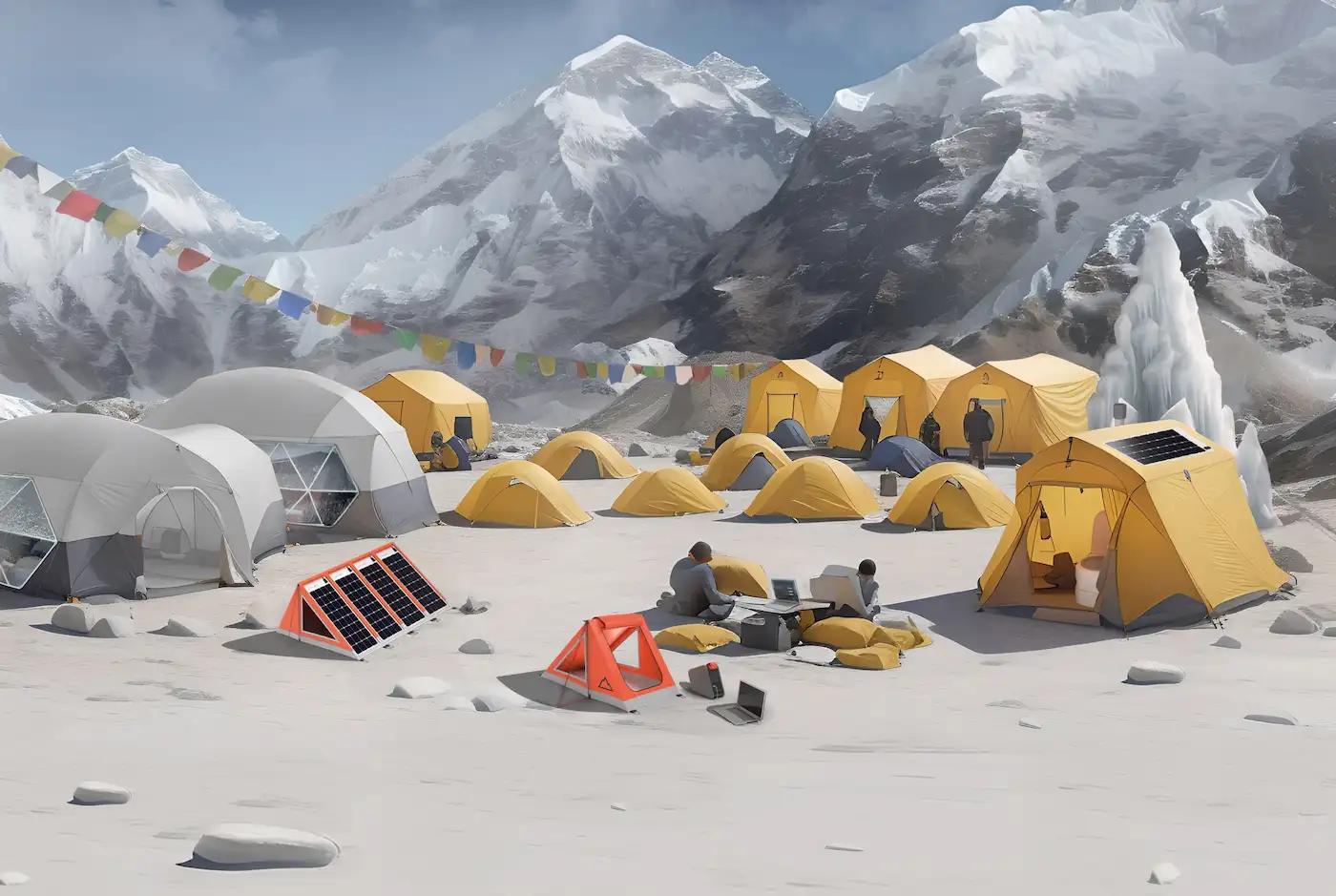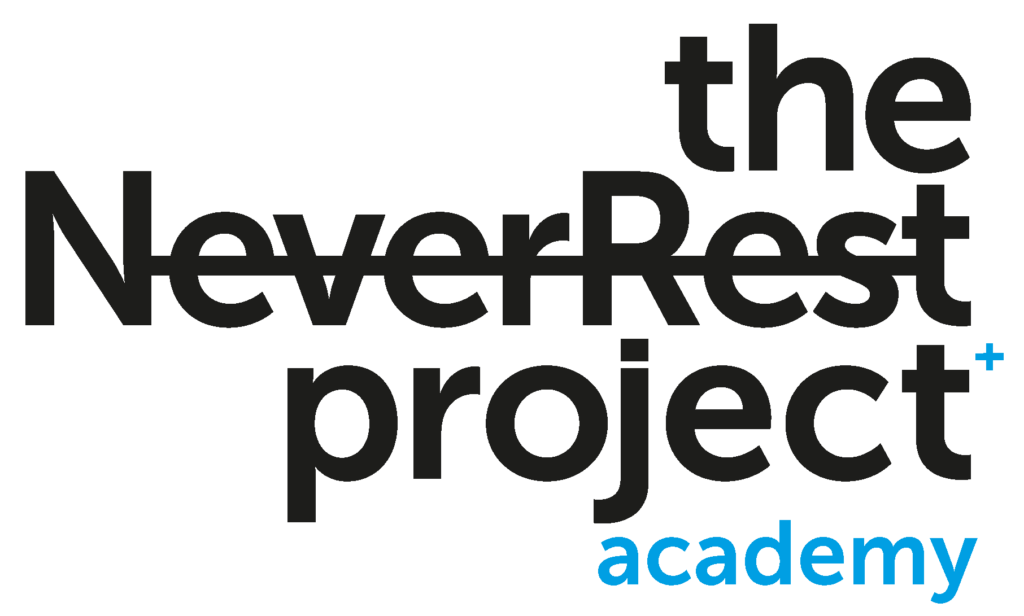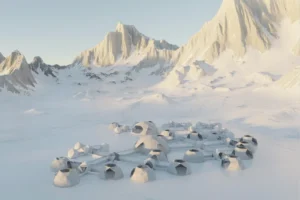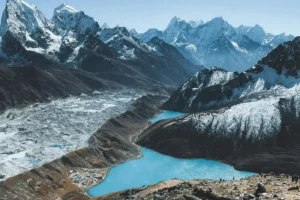
Nepal presents the First Sustainable Everest Base Camp developed by The NeverRest Project
The NeverRest Project, in collaboration with the Nepal Tourism Board (NTB), presents in Nepal different pioneering developments worldwide to reverse the environmental problems on Mount Everest.
Each expedition season, around 240,000 liters of urine are generated and dumped directly into the Khumbu glacier, and the solutions presented reduce urine by 42%. The Sustainable Base Camp for Everest also includes portable solar tents that reduce the use of gas and kerosene.

Simulation of the first sustainable Mount Everest Base Camp, with the Makura, Sunmit, Ice Spring and Flame Flush designs / The NeverRest Project / Elisava
Pokhara, Nepal, October 8, 2023. The environmental and technological engineering company The NeverRest Project yesterday presented the development of the first sustainable Everest Base Camp, a set of world-first solutions that aim to reverse the environmental problems of the highest mountain in the world on its Nepalese side, in a proposal made in collaboration with the Nepal Tourism Board (NTB), the National Tourism Organization of Nepal.
The presentation, by the CEO and founder of The NeverRest Project, Frédéric Kauffman, took place within the framework of the 2nd International Conference on Sustainable Mountain Development, held in the Nepalese city of Pokhara, which was attended by the CEO of Nepal Tourism Board (NTB), Dhananjay Regmi, members of the Army in charge of the Mountain Clean-up Campaigns -the annual waste cleanups of Everest and other mountains- as well as representatives of the tourism sector, engineers and environmental scientists from Nepal, India, Japan and United States, among other countries.

CEO of Nepal Tourism Board (NTB), Dhananjay Regmi, and the CEO and founder of The NeverRest Project, Frédéric Kauffmann, after the presentation of the First Everest Base Camp in Pokhara, Nepal.
With the purpose of providing innovative solutions to the management of waste derived from the rapid growth of tourism and its consequences in the mountains, this first Everest Sustainable Base Camp covers different categories of action that include planning and design, waste management, energy resources and water resources, education and awareness, conservation of the natural environment and collaboration with local communities, in a project in which Elisava Barcelona University School of Design and Engineering and the Himalayan climber Alex Txikon has actively participated.
The CEO of the Nepal Tourism Board (NTB), Dhananjay Regmi, highlighted that “the temperature in the Himalayas is rising and this of course also affects Everest, and therefore mountain activities are affected. Everyone has heard about the problems at Everest Base Camp in the sense of overcrowding and that the glacier it is next to is melting, so we need a sustainable solution in this regard.” He also added that “what The NeverRest Project has proposed is a very good idea and a great solution, and we need to seriously think about how to implement it in Nepal, so we need to work together for this.”


For his part, the CEO and founder of The NeverRest Project, Frédéric Kauffmann, highlighted that “this first Sustainable Base Camp for Mount Everest is the result of two years of intense work with international and Nepalese engineers, environmental scientists and mountain experts, with which we can now position Nepal as an international benchmark in sustainability in high altitude tourism.”
The first Sustainable Everest Base Camp
The project has different solutions in different phases of development, with the aim of testing some of them on a pilot basis at Everest Base Camp the next expedition season, in spring 2024, always in collaboration with the Nepal Tourism Board (NTB). The solutions presented are the following:
Data collection
The project includes an exhaustive topographic analysis of the Everest Base Camp area, under the parameters of terrain study, distribution of the territory of the expedition operators – and its evolution during recent years -, the organization of tents and services shared, and the evolution of the Khumbu glacier, next to which the Base Camp is located, among other parameters.




Space use analysis
The Kapas space use manual offers tour operators a clear and structured approach to establishing sustainable and efficient base camps by equitably placing tents, environmental protection measures and safety protocols. Thus, well-organized, environmentally responsible and efficiently spaced base camps can be created, promoting sustainable practices and minimizing alterations to the natural environment.


The Kapas project / Adria Fàbregas. Elisava.
The preparation of this manual has involved the development of a detailed mapping of Everest Base Camp, to which a matrix has been added that reveals more efficient ways of using the available territory, and that invites innovation, for example, sharing spaces between companies. of large and small expeditions.
Geodesic dome tent connector module
Makura is an approach designed to connect geodesic dome tents while ensuring effective heat retention, thermal comfort of occupants and improving overall quality of life, safety and equality at Everest Base Camp.


A simulation of Makura / Irene Morera. Elisava.
It is a modular system that facilitates thermal conservation and, therefore, gas savings from the stoves that heat the stores individually. In addition, it encourages social interaction of expeditioners both with each other and with their Nepalese team, often separated.
Portable urinal with filter
The NeverRest Project‘s work calculations indicate that each person generates a daily average of 2 liters of urine at Everest Base Camp, which means that in a two-month season and a presence of about 2,000 people at Base Camp From Everest every spring, around 240,000 liters of urine are generated each season and dumped directly into the Khumbu glacier, next to which Everest Base Camp is located.

The Nourea system / Paula Santacana. Elisava.
The Nourea system is a portable urinal, with a built-in filter, which reduces 42% of human organic waste (urine). It is designed to be implemented in high mountain areas with unregulated tourism, its use is unisex and contains a filter that allows repeated uses and transforms urine into water in about 20 minutes.
A waste incinerator sink
With the aim of improving the sanitation and waste management situation at Everest Base Camp, the proposed solution consists of the implementation of incinerator toilets that transform human waste into ashes.

A simulation of the Flame Flush / The NeverRest Project.
The proposed toilet burns biological waste at high temperatures, leaving only a negligible amount of ash, equivalent to approximately one cup of tea for four people for a week of use.
The first portable solar tent
A total of 4,392,575 kW/day are consumed at Everest Base Camp. This would be equivalent to approximately 450.44 liters of kerosene, according to calculations by The NeverRest Project.

The Sunmit system / Marina Guzman. Elisava.
To reduce these levels of this fuel, the first portable solar tent has been designed, with a flexible solar panel, which allows it to be self-sufficient in the mountains, with the aim of reducing as much as possible the use of kerosene and gas at the Base Camp of the Everest and replace it with solar energy. It has two days of autonomy, allows you to light eight light bulbs for 6 hours and charge 11 mobile phones and two computers.
An artificial glacier to avoid damaging the natural Khumbu glacier
At Everest Base Camp, a total of 12,000 liters of water are consumed per day, including that used for cooking and showering and washing. Normally ice is collected from the Khumbu glacier to be boiled and used that water.
To avoid damaging the glacier, located in the Sagarmatha National Park, The NeverRest Project proposes an artificial glacier (The Ice Spring) with a similar function to some already implemented in India that, once implemented in Everest Base Camp, can supply drinking water to all kitchens without touching the natural Khumbu glacier. In this way, a total of 750,000 liters of water would be provided to the Base Camp during the expedition season from a reliable, drinkable and sustainable source.

A simulation of The Ice Spring in the Everest Base Camp / The NeverRest Project.
Good practices manual
With the aim of changing the mental framework about the need to care for natural spaces, The NeverRest Project is also developing a regulatory guide on Everest Base Camp for visitors, tourism sector operators and local people, based on recommendations on social aspects, cultural and environmental aspects of the country, as well as in informative conferences, practical workshops and educational materials.
Expert Committee
In collaboration with the Nepal Tourism Board (NTB), work is underway to create a committee of experts divided into specialized areas of knowledge: security, planning and design, waste management, energy and water, conservation of the natural environment, education and community awareness and collaboration. This collaboration aims to serve as an international example of cooperation to implement innovative proposals in the Everest region.
This Committee will be made up of representatives of the Nepal Tourism Board (NTB), Nepalese mountain tourism management professionals, tourism industry actors, university experts, environmental specialists, engineers, geologists and experts from other disciplines. The objective is to elevate Nepalese professionals to an international reference standard in the environmental management of high-altitude tourism.
About The NeverRest Project
The NeverRest Project is an environmental and technological engineering company from the United States, based in Barcelona and collaborating with institutions in Nepal, which works to implement a system of sustainable actions and a self-sufficient circular economy aimed at environmental protection and management, to achieve a better balance between tourism and ecosystem.
The NeverRest Project team is made up of engineers, technological specialists, biologists, climate change experts and mountaineers, among others, who work transversally on different solutions and prototypes to clean the highest mountain in the world after more than forty years of commercial shipments and abandonment of waste in the area.
The NeverRest Project is supported by HyperloopTT, the transportation and technology licensing company, with which it signed a partnership agreement in 2021.
About Elisava
Javier Peña, General Director of Elisava: “The projects carried out by Elisava students perfectly symbolize one of the main objectives of the university: the transfer of knowledge between the university and civil society. As a design and engineering school, we have a great responsibility to generate projects that make a more sustainable world and this is a perfect example.”
Elisava Barcelona School of Design and Engineering is a faculty of UVic-UCC. It promotes education, knowledge and research in the fields of design, communication and engineering. Located in Barcelona, Elisava has trained more than 25,000 students in its 60-year history. Together with Elisava Research, the school develops projects with companies, institutions and NGOs to generate and transfer knowledge, address present and future challenges and foster change. Elisava raises professionals with the skills needed to design products, services and environments that contribute towards creating a more environmentally responsible, inclusive and community-focused society.
Credits of the Elisava students:
Sunmit – Marina Guzman
Nourea – Paula Santacana
Kapas – Adria Fàbregas
Makura – Irene Morera
Tutors: Roger Paez, Marta Gonzalez, Manuela Valtchanova, Massimo Meninchinelli, Josep Puig, Roger Arquer, Francesc Pla.
For press & media inquires:
Xiana Siccardi, dircom The NeverRest Project



